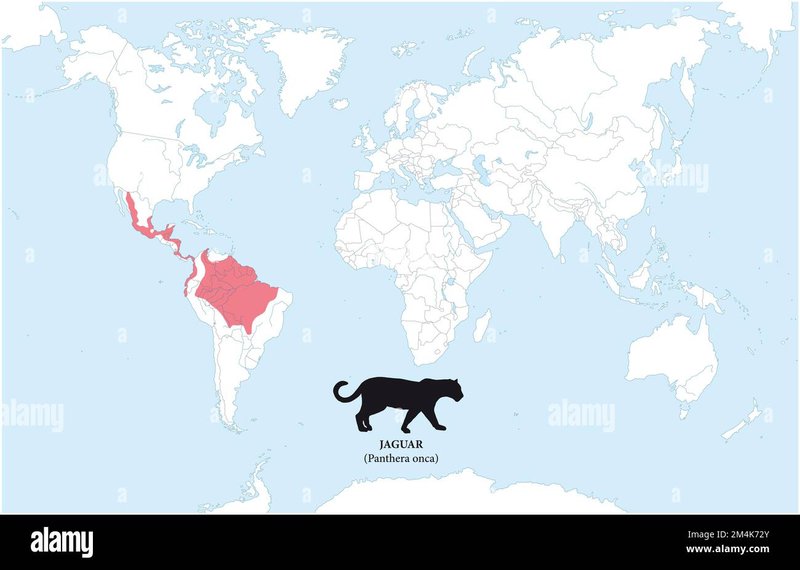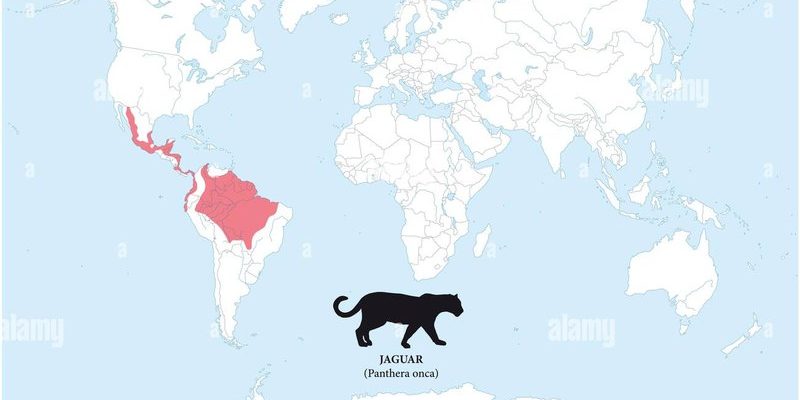
Jaguars are more than just beautiful creatures; they’re a crucial part of their ecosystems. These big cats roam primarily in the Americas, but their habitats can vary significantly depending on the region. From tropical rainforests to dry scrublands, the range of a jaguar is as diverse as the species itself. So grab a cup of coffee, and let’s embark on this journey to uncover where jaguars live.
The Natural Habitat of Jaguars
Jaguars thrive in various natural habitats, with a strong preference for tropical and subtropical forests. These lush environments provide ample cover for hunting and protection from the sun. Imagine a vibrant jungle filled with towering trees, thick underbrush, and the sounds of wildlife echoing all around. This is the ideal home for a jaguar.
In addition to tropical forests, jaguars also inhabit mangrove swamps and seasonally flooded grasslands. These areas offer a mix of water and land that jaguars find appealing, allowing them to swim easily in rivers or lakes. Interestingly, jaguars are excellent swimmers, and they often hunt in water, targeting fish and caimans. It’s not just about being on land; they can glide through waterways with grace.
Moreover, jaguars can be found in dry forests and scrublands. While these environments may not be as lush as their tropical counterparts, they still provide the necessary resources for survival. Here, jaguars adapt to the conditions, hunting smaller mammals and utilizing the landscape to their advantage.
Geographic Distribution of Jaguars
You might be wondering just how far these magnificent creatures roam. Jaguars are primarily found in Central and South America, extending from Mexico down to Argentina. Their presence is particularly notable in the Amazon rainforest, where they have a significant population.
Here’s a little breakdown of their distribution:
- North America: Jaguars once roamed much of the southern United States but now primarily inhabit parts of Arizona and New Mexico.
- Central America: Countries like Guatemala, Honduras, and Nicaragua hold important populations, particularly in protected areas.
- South America: The Amazon basin in Brazil, Colombia, and Peru is a hotspot for jaguar activity, with significant numbers found here.
Understanding this distribution is crucial for conservation efforts. Jaguars face numerous threats due to habitat destruction and poaching. Their range has dramatically shrunk over the years, making their conservation all the more critical.
The Importance of Wetlands for Jaguars
Wetlands play a vital role in a jaguar’s habitat. These areas, which include swamps and marshes, provide a rich source of food and cover. Jaguars have been known to hunt in these regions, waiting silently for prey to come close.
Strong swimmers by nature, jaguars often use their aquatic skills to their advantage. They might even stalk an unsuspecting capybara or a turtle in the water. Wetlands are also rich in biodiversity, meaning that jaguars can find a variety of food sources, from fish to small mammals.
By protecting wetland habitats, we help ensure the survival of jaguars. They rely on these ecosystems not just for food but also for breeding grounds and safe nurseries for their young. When we lose wetlands, we jeopardize the entire food chain that supports these majestic cats.
Jaguars in Urban Areas
As cities expand, jaguars are sometimes forced into urban areas in search of food and shelter. This can lead to interesting interactions between these big cats and humans. Although it’s not common, there have been sightings of jaguars in more populated regions, especially near forests or parks that serve as corridors for their movement.
In these situations, jaguars may hunt livestock or seek out pets, which can lead to conflicts with humans. Educating local communities about the importance of coexistence is crucial. Jaguars play a key role in controlling prey populations, which helps maintain ecosystem balance even near urban settings.
Communities can take steps to promote coexistence, such as securing livestock and using deterrents to keep jaguars away. This way, both people and jaguars can thrive, even in close proximity.
Threats to Jaguar Habitats
Unfortunately, jaguars are facing significant threats to their habitats. Deforestation is one of the biggest culprits. As humans clear land for agriculture or urban development, jaguars lose their homes and hunting grounds. This forces them into smaller areas, making it tougher for them to find food and mates.
Additionally, poaching remains a serious issue. Jaguars are hunted for their beautiful pelts and sometimes even for their body parts, which are thought to have medicinal properties in some cultures. This illegal activity not only reduces their population but disrupts the balance of their ecosystems.
Another threat is climate change, which affects rainfall patterns and can lead to habitat degradation. As temperatures rise, the suitable habitats for jaguars may shift, making it difficult for them to adapt. To protect these beautiful creatures, it’s essential to address both habitat destruction and climate change.
Conservation Efforts for Jaguars
Efforts are underway to protect jaguar habitats and ensure their survival. Various organizations focus on creating protected areas where these animals can thrive without human interference. Establishing wildlife corridors is also crucial, allowing jaguars to move safely between habitats and find mates.
Community-based conservation programs are also gaining traction. By engaging local populations in conservation efforts, people are more likely to see the value in protecting jaguars and their habitats. This can include eco-tourism initiatives that bring in funding while educating visitors about the importance of these big cats.
With continued awareness and action, we can help secure a future for jaguars. Every effort counts, whether it’s supporting conservation organizations or advocating for sustainable land use practices.
Wrapping It Up
So, where do jaguars live? They make their homes in a variety of habitats across the Americas, primarily in forests, wetlands, and even urban areas. Understanding their distribution and the threats they face is vital for conserving these stunning big cats.
Jaguars are not just animals; they are vital players in their ecosystems, and their survival hinges on our actions. By protecting their habitats and promoting coexistence, we can ensure that future generations get to marvel at the beauty and strength of these incredible creatures. Let’s keep the conversation going about how we can all contribute to their conservation.

